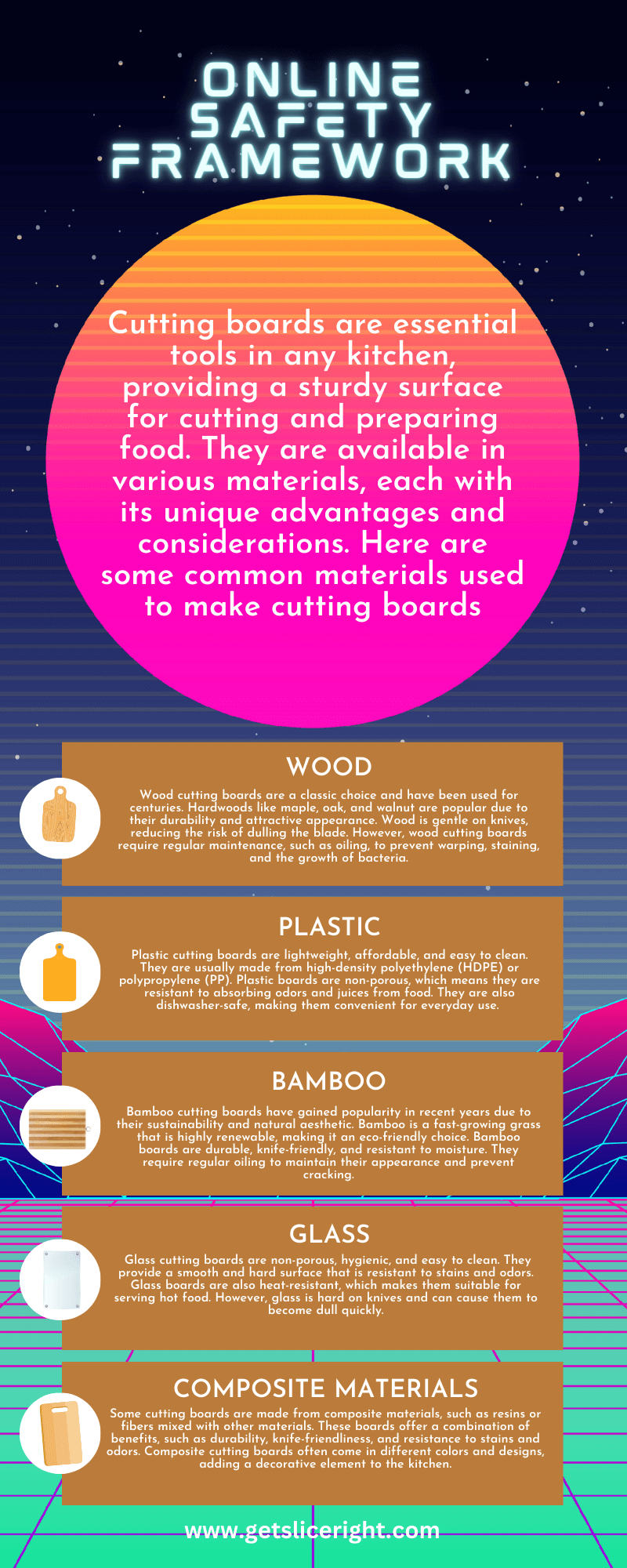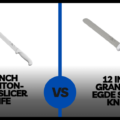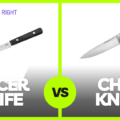Cutting boards provide a safe and hygienic work surface for preparing food. They are usually made from wood, plastic, or composite materials, which can withstand chopping and slicing without being damaged.
What Are Cutting Boards Made Out Of?
Cutting boards are made from various materials, each with its own benefits and drawbacks. Here are some of the most common materials used for cutting boards:
- Wood: Wooden cutting boards are popular for their durability and natural beauty. They are often made from maple, walnut, cherry, or teak hardwood. Wooden boards have a self-healing property that helps to minimize knife marks and is gentle on knife edges.
- Bamboo: Bamboo cutting boards are an eco-friendly option, as bamboo is a renewable and sustainable resource. They are lightweight, durable, and have antimicrobial properties. However, they can be harder on knife edges than wood.
- Plastic cutting boards are affordable, lightweight, and easy to clean. They can be sanitized in the dishwasher and are typically made from polyethylene or polypropylene. However, they can develop deep grooves from knife cuts, which may harbor bacteria if not cleaned thoroughly.
- Composite: Composite cutting boards are made from wood fibers and resin, making them durable and easy to maintain. They are dishwasher safe and have a similar feel to wood, but they can be slightly harder on knife edges.
- Glass: Glass cutting boards are easy to clean and sanitize but can be very hard on knife edges, leading to dull blades. They are also prone to chipping and cracking, making them less durable than other options.
- Stone: Stone cutting boards, such as those made from granite or marble, are attractive and easy to clean, but they can be extremely hard on knives and prone to chipping or cracking.
- Rubber: Rubber cutting boards are flexible, durable, and gentle on knife edges. They are easy to clean and can be sanitized in the dishwasher. They are commonly used in professional kitchens due to their durability and hygiene properties.
What Are The Factors Affecting The Choice Of Cutting Boards?
When choosing a cutting board, you may want to consider a few additional factors beyond the material:
- Size: Cutting boards come in various sizes, so selecting one that fits your available counter space and storage is essential. A larger cutting board provides more room for prepping ingredients but may be harder to clean and store.
- Thickness: The thickness of a cutting board can affect its stability and durability. Thicker boards are generally sturdier and less prone to warping, while thinner boards may be more lightweight and portable.
- Non-slip features: Look for cutting boards with non-slip feet or edges to prevent the board from sliding around while you’re using it. This can help increase safety and make it easier to cut and chop ingredients.
- Juice grooves: Some cutting boards have grooves around the edges to catch liquids and prevent them from spilling onto your counter. This feature can be particularly useful when cutting juicy fruits or carving meats.
- Reversible design: Reversible cutting boards have two usable sides, allowing you to flip the board over for different tasks or to extend its life.
- Maintenance: Different materials require varying levels of care and maintenance. For example, wooden and bamboo cutting boards must be oiled periodically to prevent drying and cracking, while plastic and composite boards can be cleaned in the dishwasher. Consider your willingness to maintain the cutting board when selecting a material.
- Aesthetics: Some prefer a cutting board that matches their kitchen decor or complements their other kitchen tools. Keep in mind that the cutting board’s appearance may change over time due to knife marks and regular use.
What Are The Uses Of Cutting Boards?
Cutting boards serve various purposes in the kitchen, providing a stable and protective surface for food preparation tasks. Here are some common uses for cutting boards:
- Chopping and slicing: Cutting boards are essential for chopping, slicing, and dicing various ingredients, such as fruits, vegetables, and herbs. They protect your countertop from knife damage and provide a comfortable surface for your knife to make clean cuts.
- Carving meats: Cutting boards are also used for carving cooked meats, such as roasts, poultry, and fish. They can help you catch juices and prevent cross-contamination between raw and cooked foods.
- Mincing: Mincing herbs, garlic, or other small ingredients requires a stable cutting surface. A cutting board helps you mince ingredients efficiently without damaging your countertops or knife.
- Kneading dough: Cutting boards can provide a smooth surface for kneading dough when making bread, pasta, or pastries. They can be easily cleaned afterward, making them a convenient choice for this task.
- Cutting cheese: A cutting board is useful for slicing and serving cheese, providing an attractive and functional surface for guests to cut their own portions.
- Assembling sandwiches and wraps: Cutting boards can be used as a workspace for assembling sandwiches, wraps, or sushi rolls, helping to keep your countertop clean and providing a stable surface for cutting and layering ingredients.
- Transferring ingredients: Cutting boards with raised edges or handles can help you easily transfer chopped ingredients to pots, pans, or serving dishes.
- Protecting countertops: Cutting boards protect your countertops from heat, scratches, and stains when used as a barrier between hot pots and pans or when transferring ingredients from one area to another.
- As a serving tray: Some cutting boards are designed to double as serving trays, allowing you to present appetizers, charcuterie, or other small dishes stylishly and functionally.
- Food separation: Using separate cutting boards for different food groups (such as raw meats, vegetables, and cooked foods) can help prevent cross-contamination and maintain a hygienic kitchen environment.
What Is The Best Material For Cutting Boards?
Based on this information, many prefer wood or bamboo cutting boards for their overall performance, durability, and aesthetics. However, plastic and composite cutting boards can be more practical and budget-friendly for some users.
Ultimately, the best cutting board material for you will depend on your budget, use, maintenance preferences, and your importance on aesthetics. It’s a good idea to have various cutting boards in different materials and sizes so you can choose the best one for specific tasks or ingredients.
FAQs
What woods are cutting boards made of?
Cutting boards are typically made of hardwoods, such as maple and walnut. Soft woods like pine or cedar can be used, but they absorb odors more readily and dull cutlery faster than denser hardwoods.
Are cutting boards sanitary?
When cared for properly, cutting boards are hygienic and safe to use. Keeping your cutting board clean is important by regularly washing it with hot soapy water or a combination of baking soda and white vinegar. After sanitation, the board should be dried thoroughly before being used again.
Are there any special features for certain types of cutting boards?
Different types of cutting boards offer various features. For example, some wooden cutting boards are reversible, allowing for two distinct sides and surfaces. Plastic boards often have non-slip edges to provide a safe grip while slicing or dicing ingredients and meat. Bamboo boards also come with end grain construction that helps reduce strain on knives and keeps them sharper for longer.
Are there any alternatives to traditional cutting boards?
Yes, in addition to the wooden and plastic styles, a variety of alternative materials are available. Reusable silicone mats provide a non-porous surface that is easy to clean and antibacterial.
Which knife should I use on the rubber cutting board?
The best knife on a rubber cutting board is a non-serrated or dull knife. Serrated knives can damage the surface of the rubber cutting board and may cause it to crack over time. It’s also important to choose a relatively lightweight knife as heavier knives can put too much strain on the material, leading to wear and tear.
Conclusion

Cutting boards come in various materials, each with its advantages and disadvantages. From wood to plastic, bamboo to composite material, there is an option for everyone’s needs. All types require care and maintenance if you want them to last. Researching the type that works best for your kitchen and lifestyle can save you time and money in the long run. With the right choice, a cutting board is an invaluable tool for anyone who cooks.

Mario Batali is a renowned author, food enthusiast, and passionate chef who has dedicated his life to exploring the world of culinary arts. With a love for sharing his knowledge and experiences, Mario has become a prominent figure in the food blogging community, inspiring countless readers with his creativity and expertise.
In addition to his culinary prowess, Mario Batali is also a talented writer with a flair for engaging storytelling. He launched his own food blog to share his recipes, cooking tips, and personal experiences in the kitchen. Over time, Mario’s blog gained a loyal following of food enthusiasts who appreciate his unique approach to cooking and his dedication to using only the finest ingredients.
Mario Batali’s passion for food and his commitment to sharing his knowledge with others have made him a true inspiration in the world of culinary arts. Through his blog, cookbooks, and public appearances, Mario continues to spread his love of food and the joy of cooking with his ever-growing fanbase.







